- Home
- Clive Cussler
Devil's Gate Page 17
Devil's Gate Read online
Page 17
“Finish the dismantling,” Djemma ordered. “And don’t question me again or I’ll dismantle you . . . piece by painful piece.”
Cochrane rubbed a hand across his face. “We have eleven construction subs and forty hard suits, not enough to do both jobs. So you choose. Do you want the target lines finished or do you want that rusting hulk of a submarine recycled?”
Djemma fought to control his anger. What he wanted was both, and a designer less insolent and more competent than Cochrane. But between the reports from Andras, the Americans snooping around the Kinjara Maru, and the increasingly pointed questions coming from the World Bank and his other creditors, Djemma didn’t have time for both.
He decided the carcass of a submarine could remain. Once he took action, it wouldn’t matter if the world knew about it or not. That would be the least of their concerns.
“Finish the target lines and the emitters,” he said. “Washington, London, Moscow, Beijing. Those four must be ready in one week or we will be vulnerable.”
He waited for Cochrane’s next battery of complaints and excuses as to why he couldn’t comply, but for the first time in ages none came forth.
“They’ll be ready,” Cochrane said. “I promise you.”
26
Eastern Atlantic, June 23
GAMAY TROUT SAT in a small chair in the Matador’s sick bay with a blanket around her shoulders and a piping hot cup of decaf in front of her. The ship’s doctor wouldn’t allow her the real thing for at least twenty-four hours. She wasn’t drinking it, only using it to warm her hands, so what did it matter? Truthfully, nothing mattered to her now, nothing except the man who lay in front of her, unmoving, on the hospital bed.
The crew of the Matador had plucked her out of the water within five minutes of her surfacing. But with the darkening skies and growing swell, she had never seen Paul surface.
Twenty minutes later, after two agonizingly slow passes, a lookout had spotted Paul, floating faceup. He made no attempt to signal and was only afloat because the wet suit gave him positive buoyancy.
They’d brought him down to sick bay, where she was being treated for mild hypothermia and oxygen deprivation. Immediately, they’d pulled a sheet between the two of them, but she could hear them working feverishly. Someone had called out “No pulse,” and then the doctor said something about “cardiogenic shock.”
At that point she’d grabbed for the curtain and pulled it back. Her husband looked like a ghost, and she’d turned away and begun to cry.
Three hours later, she was up and about and functioning something like her normal self. Paul remained unconscious, covered in blankets, with an IV of warmed fluids dripping into his arm and a mask delivering pure oxygen to his nose and mouth. His eyes remained closed, and he hadn’t as much as twitched in over an hour.
Watching him lie there in such utter stillness, Gamay had to keep checking his heart monitor just to remind herself that he was alive.
She squeezed his hand; it felt like wet clay. She couldn’t remember his hands being anything but warm, even on the coldest New England winter days.
“Come back to me,” she whispered. “Don’t leave me here, Paul. Please don’t leave.”
The door behind her opened, and the ship’s doctor, Hobson Smith, came in. Almost tall enough to require ducking as he came through the door, Smith had a gray Fu Manchu mustache, sharp eyes, and a relaxed, almost fatherly style. No one on board knew how old he was, but if NUMA had any mandatory retirement age Hobson Smith would have been well past it. And the ship all the poorer for it. His presence was like that of a loving uncle.
“No change?” he said as if he were asking her.
“He hasn’t moved,” she said. “His heart rate is—”
“His heart rate is strong,” Smith said, taking over for her. “His pulse is good. The oxygen level in his blood is getting better also.”
“But he’s still unconscious,” she said, unable to use the word coma.
“Yes,” Dr. Smith said. “For now. Paul is strong. Give him a chance to heal.”
She knew he was right, she understood that his vitals were improving, but she needed him to wake up, to smile at her and say something eminently dorky and endearing.
Smith pulled up a chair and sat beside her.
“Arm out,” he said.
She extended her arm, and the doctor put a cuff around her bicep and then pumped it up to take her blood pressure. Next he checked her pulse.
“Just as I thought,” he said.
“What?”
“Your own vitals aren’t great,” he said. “You’re making yourself sicker, worrying about him.”
She exhaled. She hadn’t eaten or even had much to drink since she’d been back up on her feet. But didn’t think she could keep anything down.
“I just don’t understand,” she said. “How did I end up surfacing so much quicker than he did?”
Dr. Smith studied her for a moment as if thinking about the question. “You said he gave you a push?”
She nodded. “After the Grouper flooded he opened the hatch, pulled me through, and gave me a shove upward. I extended my legs and pushed off his hands like a springboard, but I figured he was right behind me.”
She took a breath, trying to fight back the emotion. “The sub was dropping at that point. Maybe he got pulled down with it. Maybe he had to fight to get free of the suction before he could start moving upward.”
“I’m sure that played a part,” Smith said. “On top of that, he’s denser, heavier in muscle and bone. And don’t take this the wrong way, but men on average have a lower body fat percentage than women. Add to that the fact that you were both wearing about the same amount of neoprene, and your buoyancy level would have been much higher than his. Even if he hadn’t pushed you, you would have ascended faster and reached the surface before him.”
She looked back at her husband, thinking of all the dives they’d been on, all the training.
“Besides,” Dr. Smith added, “Paul always said you were the strongest swimmer he knew. All the more reason to marry you and make you a true Trout.”
She smiled, remembering Paul making that joke a hundred times during the reception. She could barely stand to hear him say it by the end, and now she just wished he’d wake up so he could tell it again.
“He should have just gone first,” she said, the words creaking from her throat like a rusty hinge.
Dr. Smith shook his head. “No man in his right mind would go first and leave his wife behind,” he said. “Not a man like Paul anyway.”
“And what if he leaves me now?” she said, as scared as she’d ever been in her life. “I don’t know how to do this alone.”
“I believe in my heart you won’t have to,” Smith said. “But you need to get your mind off of this and start thinking about something else. For your own good.”
“And just what would you have me think about?” she said, a little sharper than she wanted to.
Dr. Smith scratched behind his ear and stood. He took Paul’s hand from hers and placed it gently back on his chest, then he took her by the hand and walked her to the next room: the ship’s laboratory.
“There was another survivor from the wreck whom you’ve forgotten about,” he said with a twinkle in his eye. “Her name’s Rapunzel.”
Gamay had forgotten all about the little robot. And even though Rapunzel was an inanimate object, she couldn’t help but feel glad that the robot had survived and been recovered. After all, Rapunzel had saved their lives.
“They picked her up,” Gamay said.
“Uh-huh,” Smith said. “And she brought with her three samples.”
Gamay narrowed her gaze at the doctor. “Three?”
“A tissue sample you drilled from one of the crewmen,” Smith said, switching on a recessed fluorescent light that flickered to life and illuminated a workbench.
“I remember that,” she said. “Can’t recall taking any other samples.”
“Can’t
you?” With a product demonstrator’s wave of the hand, he directed her attention to another bench. A length of steel cable lay on a flat surface.
“Still in Rapunzel’s grasp when she hit the surface,” Smith said.
The cable that had held them down, she thought. She remembered cutting through it with Rapunzel’s acetylene torch, and then putting Rapunzel into a climb. She’d never directed Rapunzel to drop the cable.
“And what’s the third?” she asked.
“A piece of plastic wedged into part of Rapunzel’s frame. A broken triangular-shaped piece, probably became embedded when she was in the freighter getting knocked about.”
Dr. Smith walked over to the cable. Gamay followed. He pointed out several blackened marks.
“What do you suppose those are?”
She leaned closer. Touching the black spots, she could feel a different texture when compared to the rest of the cable, almost as if the metal had been lying on something hot enough to begin melting it.
“They remind me of spot welds,” she said.
“I thought so as well,” he said. “But I’ve never heard of someone spot-welding a cable before, and it certainly wasn’t attached to anything.”
“Maybe the cutting torch,” she suggested.
“I checked the video,” he said. “Rapunzel cut the cord in one quick move. She held the cable in place with her claw and burned through it with her torch. This section, two feet to the left, was never touched.”
Gamay looked up, intrigued, at least, a bit. “Maybe after Paul is feeling better we can—”
“Gamay,” Dr. Smith said. “We need you to do this.”
“I’m not exactly up for it,” she said.
“Director Pitt talked with the captain this morning,” Smith said. “He wants you looking at this. He knows it’s tough sledding for you right now, but someone’s gone to great lengths to keep us from finding out what happened on that ship, and he wants to know why. These are the only leads we have.”
“He ordered you to make me look at this?” she said, surprised.
Dr. Smith nodded. “You know Dirk. When there’s a job to be done . . .”
For the first time she could remember, she was actually angry with Dirk Pitt. But, deep inside, she knew he was right. The only hope of finding the people who’d harmed Paul began with figuring out who might want that ship on the bottom and why.
“Fine,” she said, attempting to put her feelings aside. “Where do we start?”
He led her over to the microscopes. “Take a look at the plastic samples.”
She set herself over the first microscope and peered into the eyepiece, blinking until everything became clear.
“Those are shavings from the plastic,” Dr. Smith said.
“Why are they different colors?” she asked.
“Two different types of plastic. We think it came from some type of storage case. The darker plastic is much harder and denser, the lighter-colored piece is also a lighter grade of material.”
She studied them both. Oddly, the darker plastic seemed to be deformed. The color was swirled in places; there were distortions in the material itself.
“It looks like the darker plastic melted,” she said. “But the lighter plastic doesn’t seem to have been affected.”
“My thoughts exactly,” he said.
“That seems backward,” she said, looking up. “Lighter plastic should have a lower melting point, and even at the same temperature would have less ability to absorb heat without deforming because there is less material to act as a heat sink.”
“You are very good at this, Mrs. Trout,” he said. “Sure you don’t want to work in the lab?”
“After what just happened,” she said, “I might never leave it.”
He smiled, crinkles forming around his eyes.
“You’re saving the tissue sample for last,” she noted.
“Because it’s the most interesting,” he said.
She slid over. “May I?”
“By all means.”
She squinted into the microscope, increased the magnification once, and then once again. She found herself looking at cellular structures, but something was wrong.
“What happened here?”
“You tell me, my marine biology expert,” Dr. Smith said.
She moved the focal point, scanning along the sample. “The cells on the right-hand side are skin cells,” she said. “For the most part, they look normal. But the cells on the left—”
“You took a two-inch core out of the man’s thigh. The cells on the right are surface cells. Those on the left are the deeper muscle cells.”
“Yes. They look odd. Almost as if they’ve exploded from the inside.”
“They have,” Dr. Smith said. “The deeper you go, the more damage you see. The highest level of epidermal tissue shows no damage at all.”
“Could it be a chemical burn?” she asked, unable to take her eyes off the ruined cells. “Maybe something that soaked in and then reacted.”
“There’s no residue present,” Smith said. “And any chemical strong enough to do that would wreak havoc with the epidermis on its way in. You ever get strong bleach on your hands?”
“Good point,” she said. “But what else could do this?”
“What could do all of this?” he said. “That’s the question we have to ask ourselves.”
She sat up and turned to face him. “One cause. Three events.”
“If you can think of one thing that would fit the bill . . .” he said.
Her mind began to churn, not in hopeless, powerless circles, as it had while she sat over Paul, but in forward motion. She could almost feel the synapses waking up and firing, like lights going on one by one in a dark office tower.
“It looks like thermal damage,” she said. “But high heat or fire would damage the surface layer of the epidermis the most.”
“Exactly,” he said. “That’s the whole reason we have an epidermal layer of dead skin cells. As thin and weak as it is, it’s basically a shell designed to keep moisture in and other things out.”
She turned back to the microscope and glanced at the cells one more time. She thought about the plastic slivers under the other scope to her side. What could possibly deform thick, heavy plastic without melting thinner lighter plastic, cause carbon deposits on metal as if it had been arc-welded, and destroy human tissue from the inside out?
Gamay looked up from the microscope again. “Mrs. Nordegrun told Kurt she’d seen things in her head.”
Smith scanned through the notes. “She told Kurt that she’d seen stars in front of her eyes right before she went down. She said, ‘I don’t want to sound crazy, but it looked like miniature fireworks going off in front of my eyes. I thought I was seeing something, but when I closed my eyes tight they were still there.’”
“I once read about astronauts experiencing something similar,” Gamay said. “On a shuttle mission a few years ago, they saw sparks or shooting-star patterns even when they closed their eyes.”
Smith sat up a little straighter. “Do you remember the cause?”
She thought back. “They were in orbit during a solar flare event. Despite the shielding on the crew’s quarters, some of the high-energy rays made it through. As these rays impact the cones and rods in the eye, they trigger neurological responses that register as starbursts in front of their eyes.”
“Not a hallucination?”
“No,” she said. “They’re actually seeing these things the same way I see you right now. Cones and rods transmitting a signal to the mind.”
Dr. Smith listened and nodded thoughtfully. He stood up, walked over to the microscope, and took another peek at the tissue sample himself.
“When I was in the Air Force, probably before you were born, I remember a young man who walked in front of one of our Phantom jets during the middle of a radar test. He was just a kid, an enlisted guy a month out of basic. Nobody saw him coming. Unfortunately for him, that particular jet
was what we called a Wild Weasel, designed to emit powerful radar bursts and flood the enemy screens with so much signal that they couldn’t pick out our planes from the mess on their screens.”
“What happened?”
“He let out a shout, fell to his knees, and then flat on the floor,” Smith said. “The chief shut the radar off, and we dragged the kid to the infirmary, but he was already dead. Strangely, his skin was not hot to the touch. Turned out he’d fried from the inside out. As horrible as it sounds, he’d basically been cooked like a meal in a microwave. I was just a medic at the time, but I remember looking at his tissue under a microscope. It looked an awful lot like this.”
Gamay took a breath, trying to put away the horror of what she’d just been told and focus on the scientific evidence.
“And the metal looks as if it’s been arc-welded,” she said.
He nodded.
“High-energy discharges can cause the resistance in the air to break down and electrical energy to jump the gaps,” she said. “I’ve spent enough time with Kurt and Joe to know that that’s exactly what arc welding is.”
“Man-made lightning,” Smith said. “That’s why fuel and ordnance have to be handled in certain ways on base. Even a static-electric charge can ignite petroleum fumes.”
“The marks on that cable look like a lot more than a static discharge,” she said.
He nodded again, a sober look settled on his face. She guessed the doctor had a theory of what had happened. She guessed it would match what she was about to suggest.
“The lights blew,” she said. “The equipment failed, even the emergency beacon. Otherwise, someone would have heard a distress signal. The captain’s wife saw stars, and the poor crewmen on the upper levels were cooked from the inside out.”
She looked him straight in the eye. “That ship was hit with some type of massive electromagnetic burst. It would have to be of ultrahigh intensity to do the damage we’ve seen.”
“A thousand radar emitters turned on to full power wouldn’t do what we’ve seen,” the doctor said.
“Then it’s something more powerful,” she said.
Dr. Smith nodded, looking grave. “Has to be.”

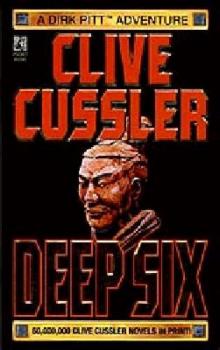 Deep Six
Deep Six Odessa Sea
Odessa Sea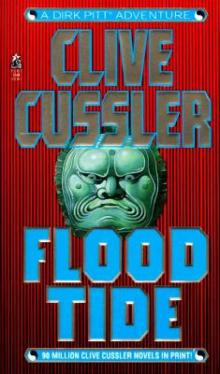 Flood Tide
Flood Tide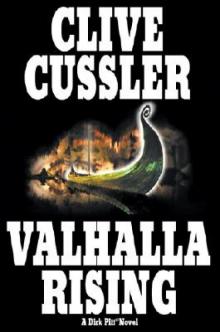 Valhalla Rising
Valhalla Rising Thriller 2
Thriller 2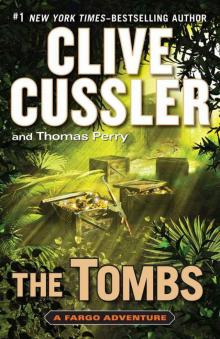 The Tombs
The Tombs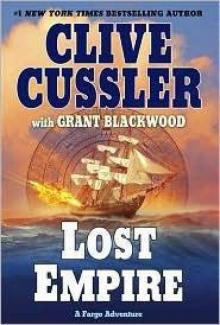 Lost Empire
Lost Empire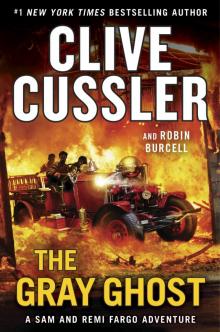 The Gray Ghost
The Gray Ghost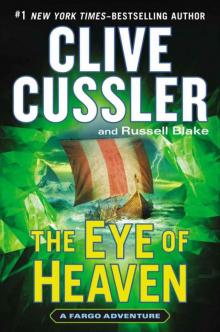 The Eye of Heaven
The Eye of Heaven Polar Shift
Polar Shift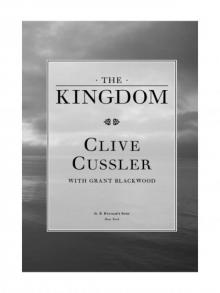 The Kingdom
The Kingdom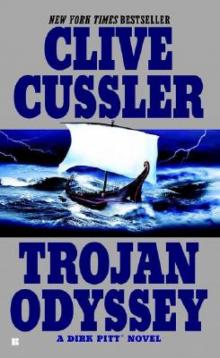 Trojan Odyssey
Trojan Odyssey Shadow Tyrants
Shadow Tyrants Nighthawk
Nighthawk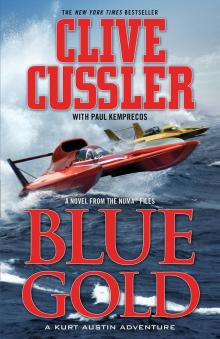 Blue Gold
Blue Gold Serpent
Serpent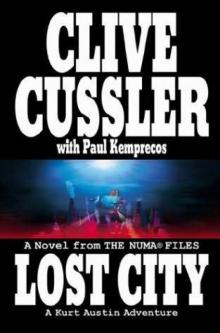 Lost City
Lost City The Gangster
The Gangster White Death
White Death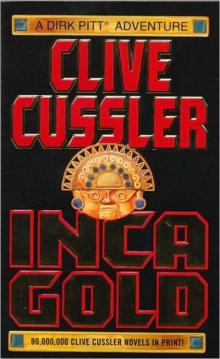 Inca Gold
Inca Gold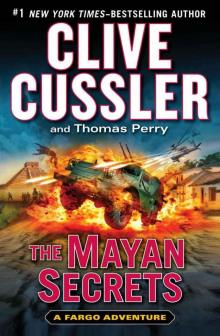 The Mayan Secrets
The Mayan Secrets The Pharaoh's Secret
The Pharaoh's Secret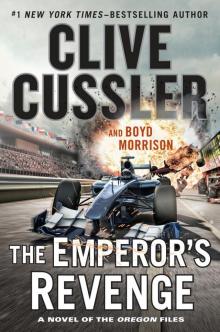 The Emperor's Revenge
The Emperor's Revenge Corsair
Corsair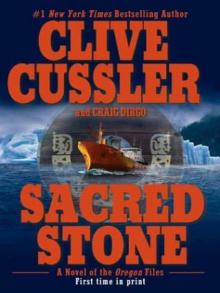 Sacred Stone
Sacred Stone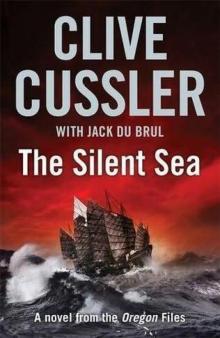 The Silent Sea
The Silent Sea The Rising Sea
The Rising Sea Black Wind
Black Wind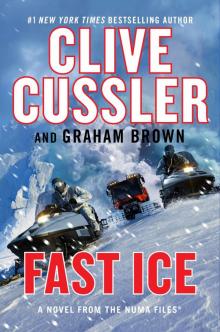 Fast Ice
Fast Ice Ghost Ship
Ghost Ship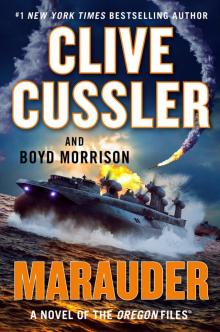 Marauder
Marauder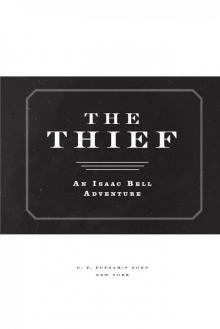 The Thief
The Thief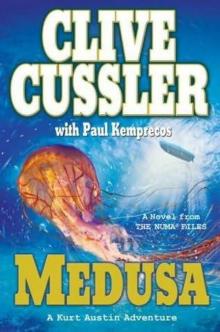 Medusa
Medusa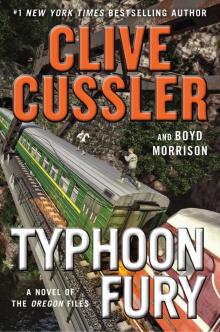 Typhoon Fury
Typhoon Fury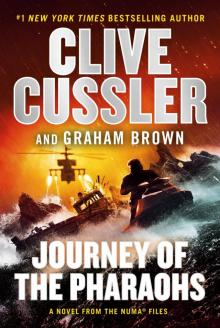 Journey of the Pharaohs
Journey of the Pharaohs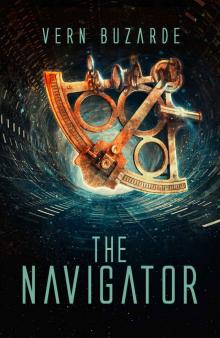 The Navigator
The Navigator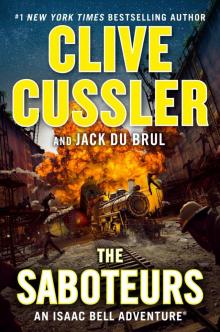 The Saboteurs
The Saboteurs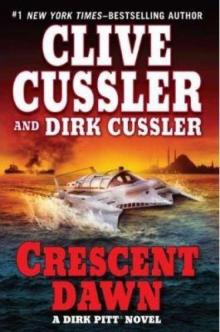 Crescent Dawn
Crescent Dawn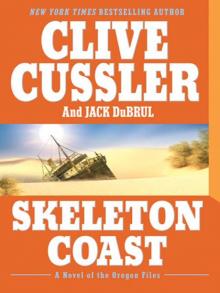 Skeleton Coast
Skeleton Coast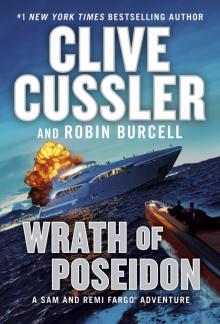 Wrath of Poseidon
Wrath of Poseidon The Mediterranean Caper
The Mediterranean Caper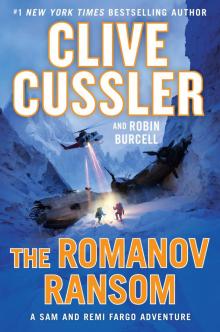 The Romanov Ransom
The Romanov Ransom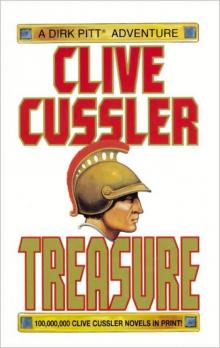 Treasure
Treasure The Race
The Race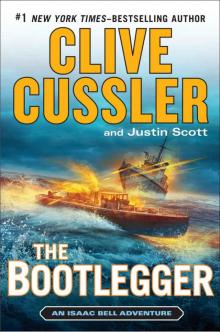 The Bootlegger
The Bootlegger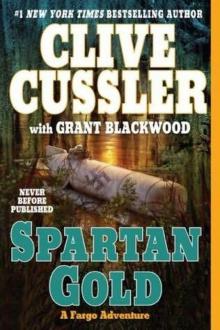 Spartan Gold
Spartan Gold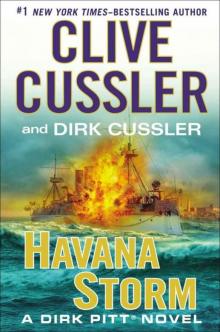 Havana Storm
Havana Storm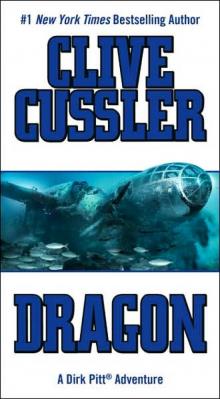 Dragon
Dragon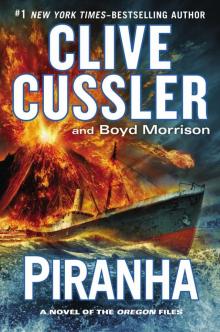 Piranha
Piranha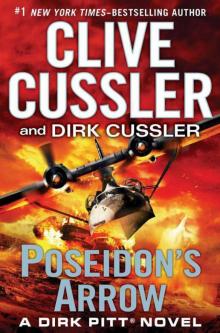 Poseidon's Arrow
Poseidon's Arrow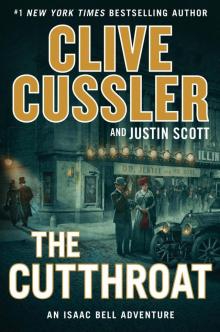 The Cutthroat
The Cutthroat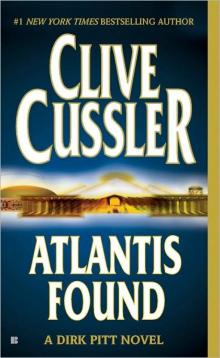 Atlantis Found
Atlantis Found The Jungle
The Jungle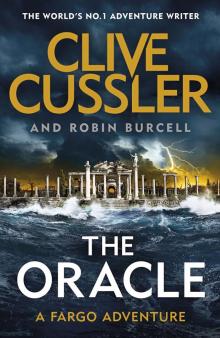 The Oracle
The Oracle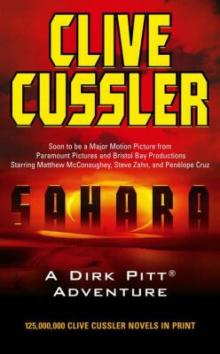 Treasure / Dragon / Sahara: Clive Cussler Gift Set
Treasure / Dragon / Sahara: Clive Cussler Gift Set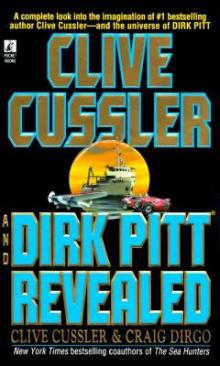 Clive Cussler and Dirk Pitt Revealed
Clive Cussler and Dirk Pitt Revealed The Sea Hunters
The Sea Hunters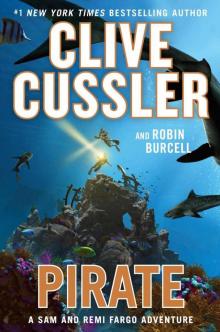 Pirate
Pirate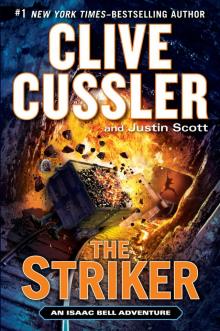 The Striker
The Striker Plague Ship
Plague Ship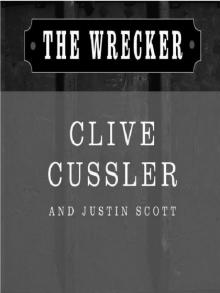 The Wrecker
The Wrecker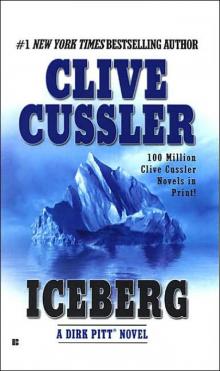 Iceberg
Iceberg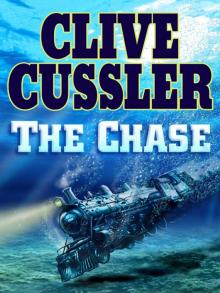 The Chase
The Chase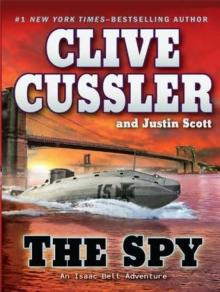 The Spy
The Spy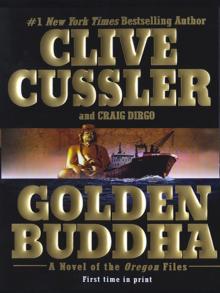 Golden Buddha
Golden Buddha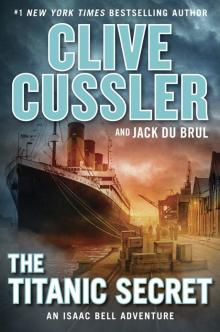 The Titanic Secret
The Titanic Secret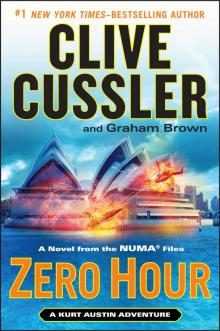 Zero Hour
Zero Hour Fire Ice
Fire Ice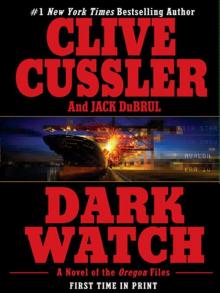 Dark Watch
Dark Watch The Storm
The Storm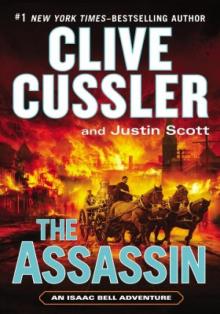 The Assassin
The Assassin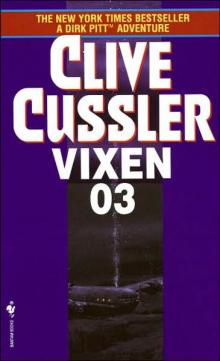 Vixen 03
Vixen 03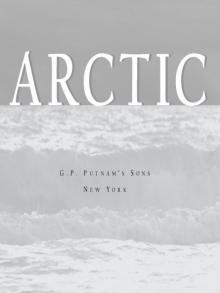 Arctic Drift
Arctic Drift Night Probe!
Night Probe! Cyclops
Cyclops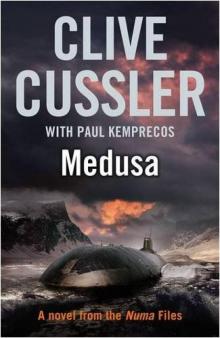 Medusa nf-8
Medusa nf-8 Shock Wave dp-13
Shock Wave dp-13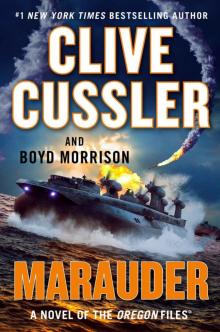 Marauder (The Oregon Files)
Marauder (The Oregon Files)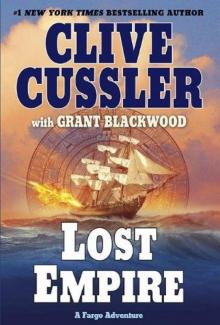 Lost Empire fa-2
Lost Empire fa-2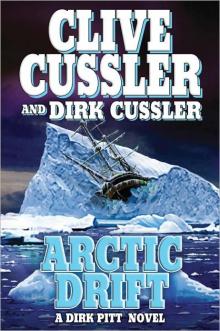 Arctic Drift dp-20
Arctic Drift dp-20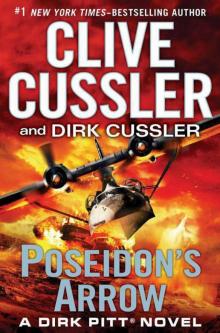 Dirk Pitt 22 - Poseidon's Arrow
Dirk Pitt 22 - Poseidon's Arrow Treasure of Khan dp-19
Treasure of Khan dp-19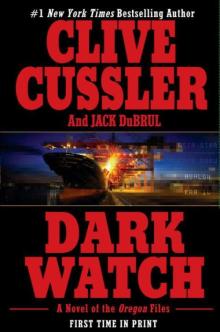 Dark Watch of-3
Dark Watch of-3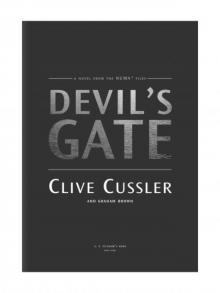 Devil's Gate
Devil's Gate The Sea Hunters II: More True Adventures with Famous Shipwrecks
The Sea Hunters II: More True Adventures with Famous Shipwrecks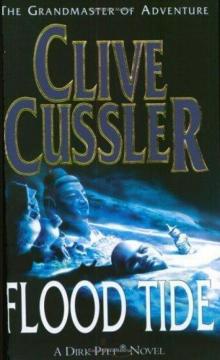 Flood Tide dp-14
Flood Tide dp-14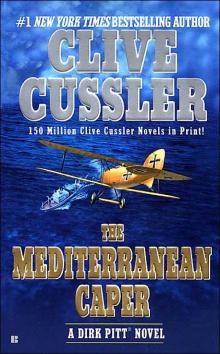 The Mediterranean Caper dp-2
The Mediterranean Caper dp-2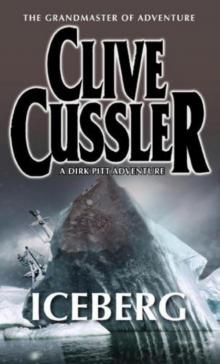 Iceberg dp-3
Iceberg dp-3 Sahara dpa-11
Sahara dpa-11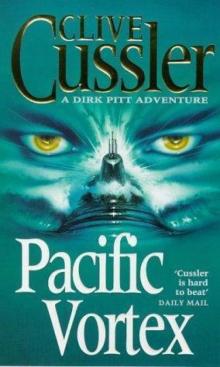 Pacific Vortex! dp-1
Pacific Vortex! dp-1 Deep Six dp-7
Deep Six dp-7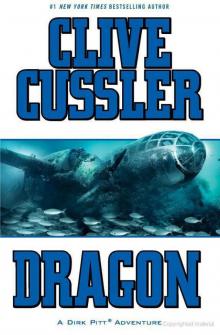 Dragon dp-10
Dragon dp-10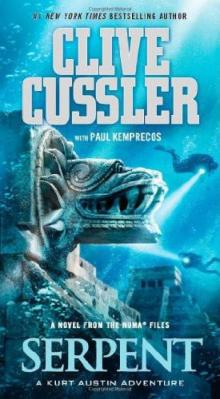 Serpent nf-1
Serpent nf-1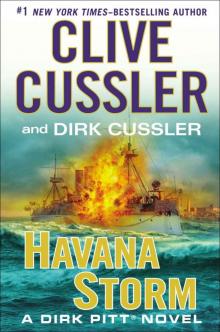 Havana Storm (Dirk Pitt Adventure)
Havana Storm (Dirk Pitt Adventure)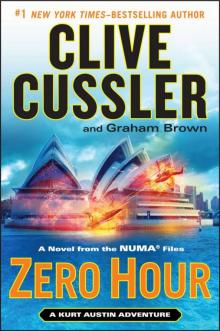 Zero Hour nf-11
Zero Hour nf-11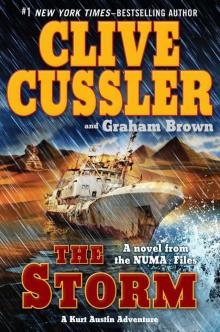 The Storm nf-10
The Storm nf-10 The Thief ib-5
The Thief ib-5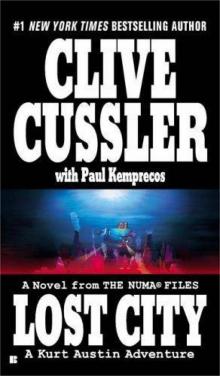 Lost City nf-5
Lost City nf-5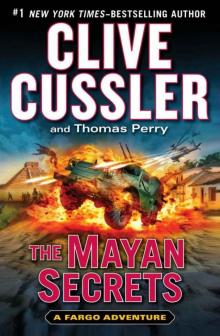 The Mayan Secrets fa-5
The Mayan Secrets fa-5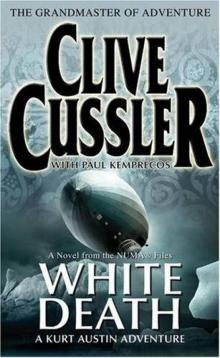 White Death nf-4
White Death nf-4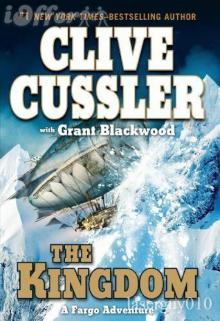 The Kingdom fa-3
The Kingdom fa-3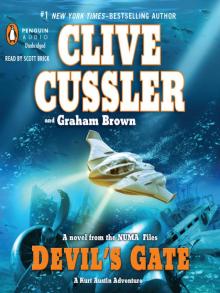 Devil's Gate nf-9
Devil's Gate nf-9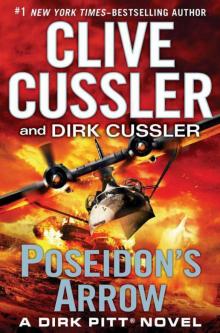 Poseidon's Arrow dp-22
Poseidon's Arrow dp-22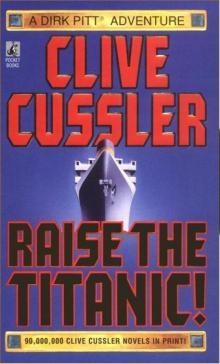 Raise the Titanic dp-4
Raise the Titanic dp-4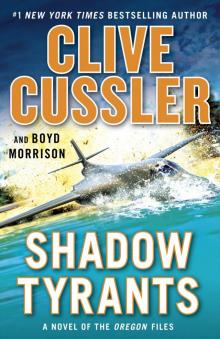 Shadow Tyrants--Clive Cussler
Shadow Tyrants--Clive Cussler Sacred Stone of-2
Sacred Stone of-2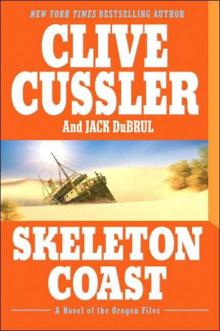 Skeleton Coast tof-4
Skeleton Coast tof-4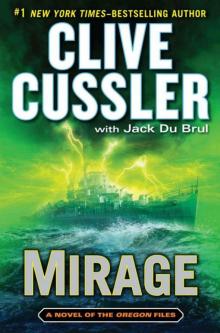 Mirage tof-9
Mirage tof-9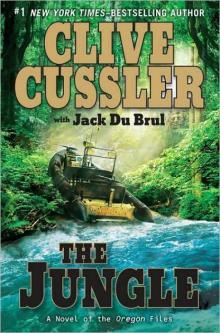 The Jungle of-8
The Jungle of-8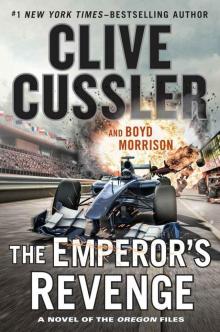 The Emperor's Revenge (The Oregon Files)
The Emperor's Revenge (The Oregon Files)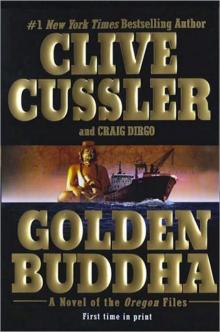 Golden Buddha of-1
Golden Buddha of-1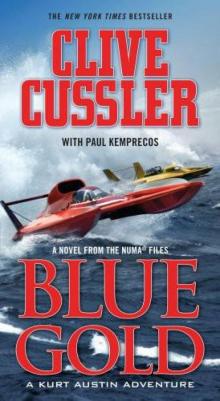 Blue & Gold
Blue & Gold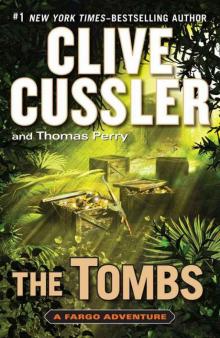 The Tombs fa-4
The Tombs fa-4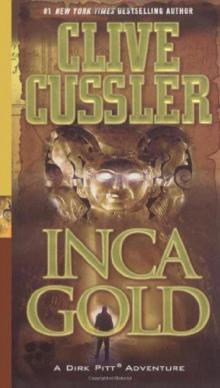 Inca Gold dp-12
Inca Gold dp-12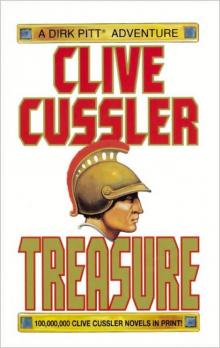 Treasure dp-9
Treasure dp-9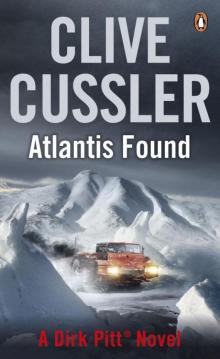 Atlantis Found dp-15
Atlantis Found dp-15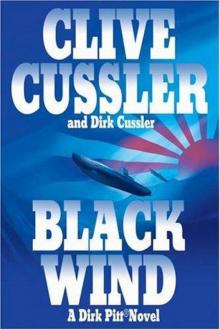 Black Wind dp-18
Black Wind dp-18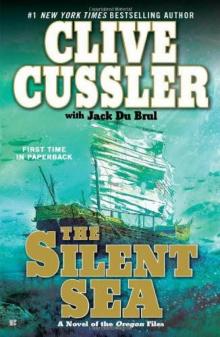 the Silent Sea (2010) tof-7
the Silent Sea (2010) tof-7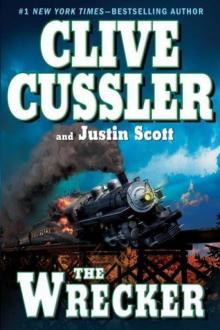 The Wrecker ib-2
The Wrecker ib-2 Fire Ice nf-3
Fire Ice nf-3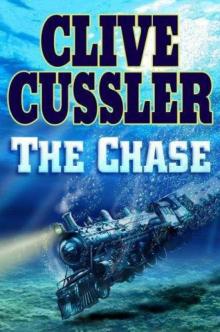 The Chase ib-1
The Chase ib-1 Sahara
Sahara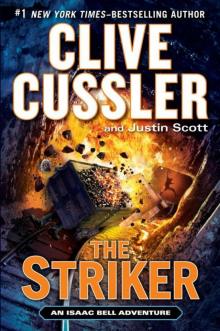 The Striker ib-6
The Striker ib-6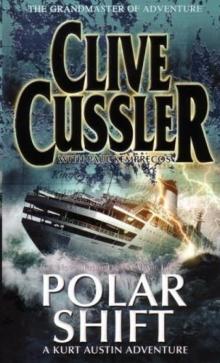 Polar Shift nf-6
Polar Shift nf-6 The Race ib-4
The Race ib-4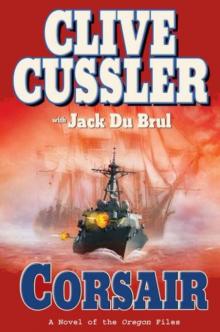 Corsair of-6
Corsair of-6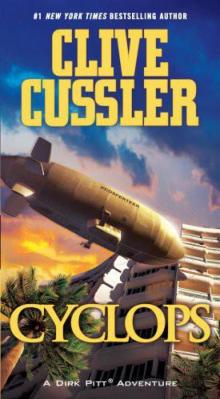 Cyclops dp-8
Cyclops dp-8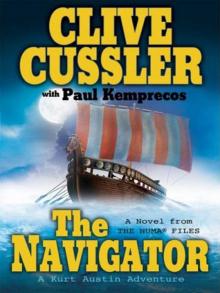 The Navigator nf-7
The Navigator nf-7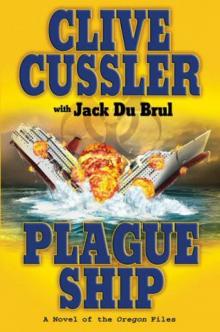 Plague Ship tof-5
Plague Ship tof-5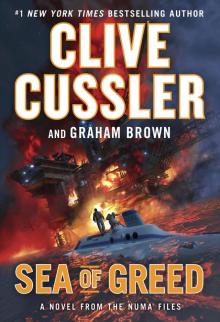 Sea of Greed
Sea of Greed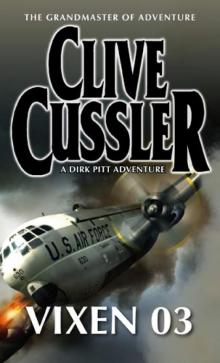 Vixen 03 dp-5
Vixen 03 dp-5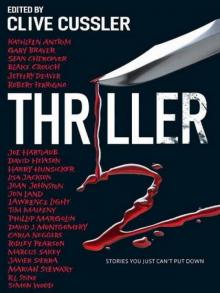 Thriller 2: Stories You Just Can't Put Down
Thriller 2: Stories You Just Can't Put Down